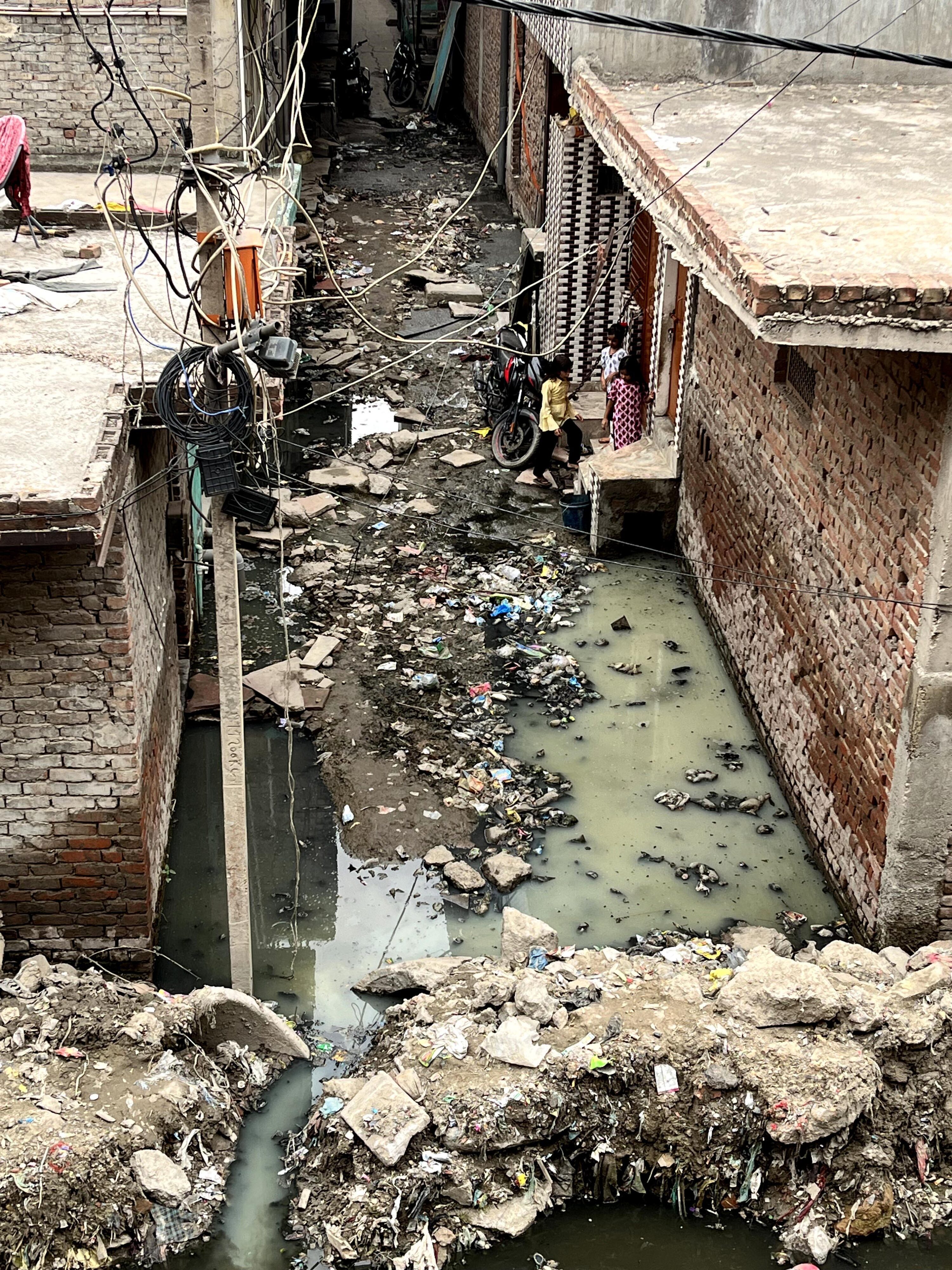With roads submerged, cops in waterlogged Khajuri Khas scale walls to reach station
For nearly a week since heavy rainfall lashed Delhi, police personnel posted at the Khajuri Khas police station in northeast district have been forced to scale walls to enter their office — a daily ordeal that shows no sign of ending.
The reason: both the entrance to the police station and the road leading to it are severely waterlogged due to an overflowing sewer line.
A ground visit to the area revealed that during the construction of the National Highway (NH 709B), which connects Delhi to Dehradun, an open drain maintained by the Flood and Irrigation Department was covered. This drain has since become clogged, causing widespread sewer overflow.
The resulting stagnant water has flooded a Delhi Development Authority (DDA) road that connects directly to the police station.
The Tribune correspondent visited the site as well as nearby Sonia Vihar and Shri Ram Colony to assess the scale of the problem. Residents were found living in dire conditions, even as the administration tried to pump out the water using generator-operated motors.
“We either climb over the wall or bring our vehicles right up to the courtyard. Wading through the sewer water is not an option. But members of the public — those coming to file complaints or for other work — have no choice but to step into the dirty water,” said a police official posted at the station.
One such visitor was 20-year-old Muskan, a resident of Shri Ram Colony, who was seen struggling to cross the flooded road to reach the station. “It’s a nightmare. The road linking our colony to the police station has been temporarily closed, so I had to take a longer route — and still ended up walking through the dirty water. It causes irritation and skin problems,” she said.
 A waterlogged Khajuri Khas area in northeast Delhi. Tribune photo: Rahul Gahlawat
A waterlogged Khajuri Khas area in northeast Delhi. Tribune photo: Rahul Gahlawat
Another resident, Vinod Gupta, remarked sarcastically that citizens were being given a “Venice-like feel” in Khajuri Khas. “Every monsoon, the roads turn into canals, and schoolchildren are left navigating them without a compass. But this isn’t a joke — it’s a result of a collapsed drainage system and complete administrative failure,” he said.
Despite continuous efforts by authorities to pump out the water, clogged drains and the expansion of the highway have slowed progress.
Khajuri Khas’s geography only worsens the situation — lying on the banks of the Yamuna, the low-lying area naturally collects runoff water. The disappearance of small ponds due to rapid urban expansion has further robbed the locality of natural drainage outlets.
These recurring issues cause severe disruptions to daily life, affect businesses and pose health and safety risks for residents.
Karawal Nagar MLA Kapil Mishra, under whose constituency the Khajuri Khas area falls, stated, “We are working on a war footing to clear the water, and our efforts have shown results as most of the stormwater has now been pumped out.”
“In the affected area, water from the nearby CRPF camp also accumulates, which further worsens the situation. As a temporary measure, we are constructing a wall alongside the existing drain and have placed sandbags around the sewers to prevent further overflow. However, these are only stopgap arrangements. A permanent solution is in the pipeline — the Flood and Irrigation Department has been allotted funds to develop a new drainage system, which is expected to be completed in the next six to seven months. Our government is committed to providing citizens with a clean and green Delhi,” he added.
Delhi